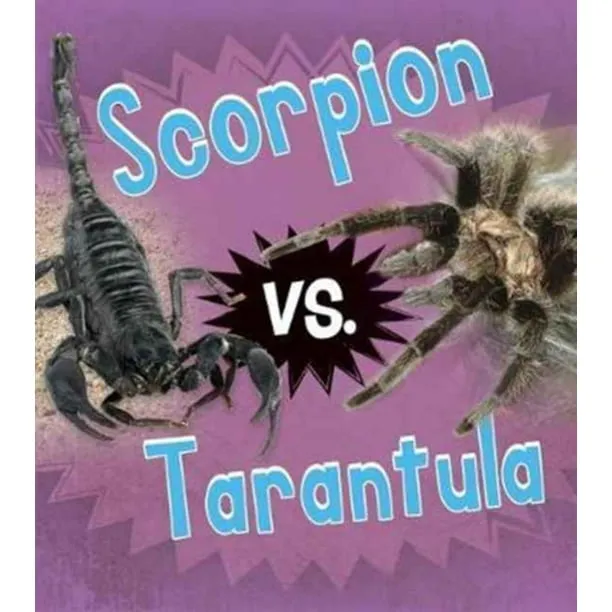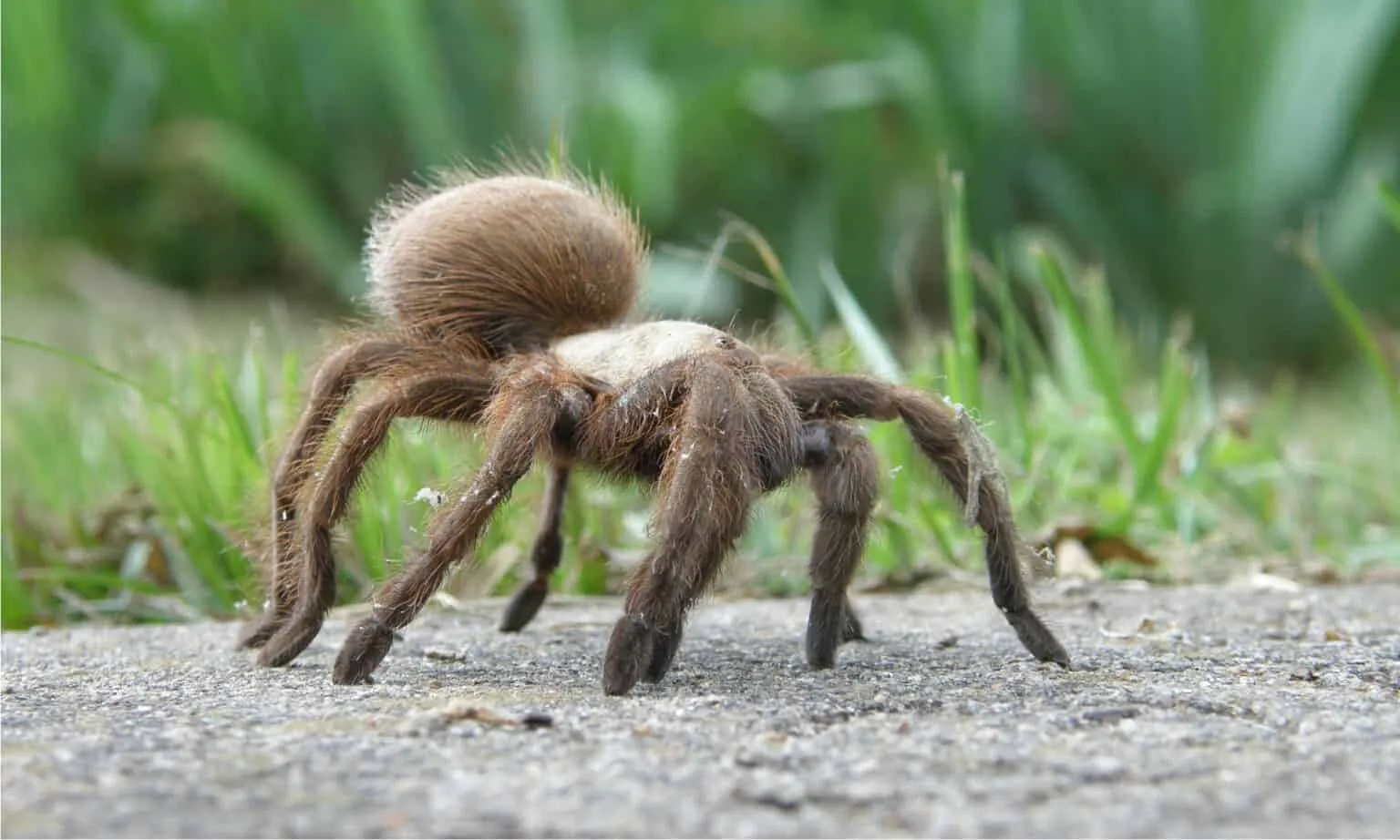Goliath Tarantula vs Emperor Scorpion
The animal kingdom is full of fascinating creatures, and two of the most captivating, albeit intimidating, are the Goliath Tarantula and the Emperor Scorpion. Both are arthropods, belonging to different classes – Arachnida. These impressive animals, with their imposing sizes and unique characteristics, often spark curiosity and wonder. This article delves into the top 5 differences between the Goliath Tarantula and the Emperor Scorpion, highlighting their key distinctions in size, appearance, venom/bite, habitat, diet, and defense mechanisms. Understanding these differences allows for a deeper appreciation of these magnificent creatures and their respective roles in the ecosystem.
Size and Appearance
The first noticeable difference between the Goliath Tarantula and the Emperor Scorpion lies in their size and overall appearance. While both are large invertebrates, their physical attributes set them apart. The Goliath Tarantula, as its name suggests, is one of the largest spiders in the world, with a leg span that can reach up to 12 inches or more. Their bodies are covered in dense, reddish-brown hairs, giving them a fuzzy and formidable look. They possess large fangs, used for injecting venom into their prey, and strong legs for gripping and maneuvering. These spiders are truly a sight to behold, and their sheer size alone is enough to make them stand out in the animal world.
Goliath Tarantula Size

The Goliath Tarantula’s imposing size is a significant factor in its survival. Their large size allows them to hunt larger prey and provides a degree of protection from smaller predators. Their leg span can reach up to 12 inches, and they can weigh over 6 ounces. This impressive size, combined with their powerful legs and fangs, makes them formidable predators. Their massive size is a key aspect of their biology and contributes to their reputation as one of the most impressive spiders on Earth. This size also influences their habitat and feeding habits, enabling them to thrive in their natural environment. (goliath-tarantula-size.webp)
Emperor Scorpion Size
The Emperor Scorpion is also a large arthropod, though typically not as massive as the Goliath Tarantula. They can grow up to 8 inches in length. Their appearance is quite different, with a segmented body and a distinctive tail that curves over their back, ending in a venomous stinger. Their coloration is usually a dark, glossy black or brown, and they have large, powerful pincers used for grasping prey. The Emperor Scorpion’s size and robust build contribute to their strength and hunting capabilities. These scorpions, though smaller than the Goliath Tarantula, are still impressively sized and have a unique presence due to their body structure and imposing claws (emperor-scorpion-size.webp).
Physical Characteristics
Beyond size, the physical characteristics of the Goliath Tarantula and the Emperor Scorpion provide additional key distinctions. The Goliath Tarantula’s hairy, eight-legged body contrasts sharply with the Emperor Scorpion’s segmented exoskeleton. The spider’s fangs are a prominent feature, used to inject venom into their prey, while the scorpion uses its claws to catch and hold food, using the stinger on its tail for defense. The differences in their appendages, like the tarantula’s spinnerets for silk production and the scorpion’s tail-mounted stinger, reflect their unique evolutionary paths and adaptations to their respective environments. (goliath-tarantula-vs-emperor-scorpion.webp)
Venom vs. Bite

The method of subduing prey and the nature of the injuries they inflict are another point of contrast. The Goliath Tarantula employs fangs to deliver a bite, injecting venom. The venom, while not typically lethal to humans, can cause pain and discomfort. The Emperor Scorpion, on the other hand, uses its stinger to inject venom. Both animals use venom to paralyze or kill their prey. The potency and effects of their venom differ, with the Emperor Scorpion’s venom being generally less potent than some other scorpion species, causing localized pain. Understanding their venomous capabilities is crucial for appreciating their predatory strategies and defensive mechanisms.
Emperor Scorpion Venom
The Emperor Scorpion’s venom is primarily used for defense and to immobilize prey. The venom injected through the stinger can cause pain, swelling, and redness at the injection site. The venom is composed of a complex mixture of toxins that affect the nervous system. While painful, Emperor Scorpion venom is not considered highly dangerous to humans; the effects are usually localized and rarely life-threatening. The primary function of the venom is to quickly subdue prey, allowing the scorpion to feed effectively. The relatively mild nature of the venom is one of the reasons Emperor Scorpions are popular in the pet trade (emperor-scorpion-venom.webp).
Goliath Tarantula Bite
The Goliath Tarantula, unlike the Emperor Scorpion, delivers its venom via a bite. The fangs, which can be quite long, inject venom into the prey. The venom’s effects are primarily localized, with symptoms including pain, redness, and swelling around the bite area. While not usually lethal to humans, the bite can be quite painful due to the size of the fangs and the nature of the venom. The primary purpose of the venom is to help the spider subdue and digest its prey. The tarantula’s bite is more of a defense mechanism, used when the spider feels threatened (goliath-tarantula-bite.webp).
Habitat and Behavior

The habitats and behaviors of the Goliath Tarantula and the Emperor Scorpion also differ significantly. The Goliath Tarantula is primarily terrestrial, living in burrows in the ground, often in humid, tropical environments. They are nocturnal hunters, venturing out at night to ambush prey. Emperor Scorpions also prefer humid, tropical environments but may be found under rocks, logs, and in crevices. They are also nocturnal, using their pincers to manipulate their environment and sense vibrations. These differences in habitat preferences influence their interactions with other species and their overall survival strategies.
Emperor Scorpion Habitat
Emperor Scorpions are native to tropical rainforests and savannas in West Africa. They prefer warm, humid environments, seeking shelter in burrows, under rocks, or beneath fallen logs. They often create shallow burrows for themselves and may be found in areas with decaying organic matter, which supports their food source. These scorpions are nocturnal hunters, coming out at night to search for food. The habitat provides the necessary shelter and resources to thrive, including an environment conducive to their survival and reproduction. (emperor-scorpion-habitat.webp)
Goliath Tarantula Habitat
Goliath Tarantulas are found in the rainforests of South America, especially in areas like Brazil, Guyana, and Suriname. They dig burrows in the ground, often near swamps or wetlands, which provide the humidity they need. Their habitat is characterized by high temperatures and high humidity. These spiders are ambush predators, waiting for prey near their burrows. The specific habitat requirements are critical for their survival, as they need both a suitable environment to build their burrows and a constant supply of food to sustain themselves (goliath-tarantula-habitat.webp).
Diet and Feeding Habits

The diets of the Goliath Tarantula and the Emperor Scorpion, while similar, also show key distinctions. Both are carnivores, but their prey preferences and hunting strategies differ. The Goliath Tarantula is a formidable predator that hunts insects, smaller vertebrates, and sometimes even birds. They are ambush predators, waiting patiently for prey to come within reach. The Emperor Scorpion feeds on insects, other arachnids, and small invertebrates. They use their powerful pincers to capture prey and often consume their meals at their leisure. These dietary differences reflect their respective adaptations and roles within their ecosystems.
Emperor Scorpion Diet
Emperor Scorpions are opportunistic predators, feeding on a variety of insects, spiders, and other small invertebrates. They use their large pincers to grasp and crush their prey. They also consume worms and sometimes even small vertebrates. Their diet varies based on what’s available in their environment. Emperor Scorpions inject venom to subdue their prey, which facilitates their consumption of the meal. They are not picky eaters, as they will eat nearly any insect or small creature they can catch. (goliath-tarantula-diet.webp)
Goliath Tarantula Diet
Goliath Tarantulas are known for their diverse diet, which includes insects, other arachnids, and even small vertebrates such as frogs, lizards, and small birds. They are ambush predators, often waiting inside or near their burrows for prey to wander too close. They use their venom to paralyze their prey, which they then consume at their convenience. Goliath Tarantulas’ diet makes them important contributors to their ecosystem, helping to control the populations of various other species. They are voracious eaters and require a significant amount of food to sustain their large size.
Defense Mechanisms

Both the Goliath Tarantula and the Emperor Scorpion have evolved defense mechanisms to protect themselves from predators. The Goliath Tarantula can flick urticating hairs from its abdomen, which can cause irritation and discomfort to potential threats. Emperor Scorpions, on the other hand, use their powerful pincers to grasp attackers and their stinger to inject venom. These defense mechanisms are vital for their survival, enabling them to ward off attacks and avoid becoming prey themselves. The specific defenses of each arthropod are well-suited to their particular habitats and lifestyles.
Emperor Scorpion Defense
The Emperor Scorpion’s primary defense mechanism is its stinger, located on the end of its tail. It uses the stinger to inject venom into threats, causing pain and temporary paralysis. This scorpion also has formidable pincers, which it can use to grasp and crush attackers. If threatened, it might also engage in a defensive posture, raising its tail to make itself appear larger. The combination of pincers and stinger provides Emperor Scorpions with an effective means of warding off predators. They are generally docile but will readily defend themselves when provoked.
Goliath Tarantula Defense
The Goliath Tarantula employs a combination of defenses. One of its primary methods is to flick urticating hairs from its abdomen. These hairs, when they come into contact with the skin, can cause intense itching and irritation, deterring predators. The spider can also bite with its fangs, injecting venom to defend itself. In addition, their large size and imposing appearance can be intimidating to potential threats. Goliath Tarantulas will often raise their front legs and display their fangs when threatened, a clear warning to back off. The urticating hairs serve as the first line of defense, with biting reserved for more serious threats.
In summary, the Goliath Tarantula and Emperor Scorpion, though both impressive arachnids, differ significantly in terms of size, appearance, venom/bite, habitat, diet, and defense mechanisms. These differences highlight their unique adaptations and roles within their respective ecosystems. Understanding these distinctions allows for a greater appreciation of the biodiversity and the wonders of the natural world. From their varied hunting styles to their respective habitats, these fascinating creatures continue to capture the curiosity and imagination of those who encounter them.
